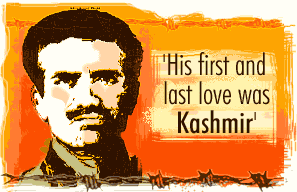Jagmohan was appointed on January 19, 1990. That night, in response to the kidnapping of Rubaiya Sayeed and other militant attacks, Indian security forces conducted warrantless and thus illegal house-to-house searches in Srinagar
The next morning, as word of the searches and beatings began to spread, people began to pour out into the streets of Srinagar
The state government declared a curfew, but few if any Kashmiris observed it.It was early evening when one group of marchers reached the Gaw Kadal Bridge on Srinagar 's Jhelum River
"When I reached Gaw Kadal, all I could see were the dead. I saw bodies of children, bodies of women, bodies of men.... Later they brought the bodies to the police compound. I saw them again. There I cried. I shouted, screamed. 'Don't do this to the people.' That day I saw everything."
Human Rights Watch, in its 1991 report on the shootings, criticized the killings and concluded that the use of lethal force was not proportional to the threat.
At least thirty-five people died. Many estimates put the toll near one hundred. Until then, this was the highest number of persons killed on a single day since the violence erupted in Jammu London
"I was just standing watching the procession of Muslims demonstrating against India
Farooq Ahmad survived. But few in Jammu and Kashmir
"I remember that scene perfectly. There were so many people. I remember thinking that all of Srinagar
The shooting at Gaw Kadal Bridge Jammu and Delhi
The state administration, led by Jagmohan, sought to end the militancy and the mass protests through the increased use of force. Government forces fired live ammunition on crowds of unarmed demonstrators.Round-the-clock curfews were imposed for days in major towns to prevent protests.Paramilitary troops conducted large-scale searches, called "crackdowns" in Jammu and Kashmir. Residents were forced to gather outside while troops ransacked their belongings, looking for hidden weapons. Informers, in hoods, identified alleged militants to be taken into custody, who were then often tortured and sometimes killed.
No known action was taken against any CRPF officials who ordered their forces to open fire at Gaw Kadal, or against the officers present during the shooting. No public inquiry was ordered into the incident.The police did file complaints against demonstrators who pelted stones at security forces, but they were not investigated. Without an investigation into what exactly happened in Gaw Kadal, there will be no chance of holding those responsible accountable.
The consequences of Gawkadal and the failure to hold the security forces accountable have been far reaching. Many young Kashmiris began to join the militants, whose popularity shot up. One man told Human Rights Watch that he and other parents watched helplessly as their sons enlisted with the militants: "Boys, as young as fourteen or fifteen, crossed the border and came back with guns. No one could stop them."
"Gaw Kadal remains an emotional and sentimental subject for Kashmiris even today".













